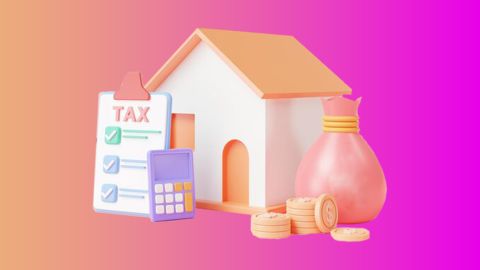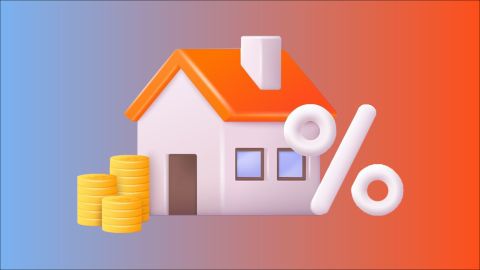India's real estate market is a vibrant and quickly expanding industry, making a substantial contribution to the nation's economic output. This sector presents abundant prospects for both investors and end-users alike. A key enabler within this domain is the ready accessibility of home financing options, such as those offered by Bajaj Finserv
Bajaj Finserv furnishes comprehensive home loan solutions, making homeownership an achievable aspiration for many. With low interest rates, adaptable repayment tenures, and a streamlined application procedure, Bajaj Housing Finance Home Loans have emerged as a favoured choice among numerous homebuyers across the country.
Catering to diverse housing needs, their product range encompasses loans for purchasing ready-to-move-in properties, construction of new homes, as well as financing for renovations and extensions. Their customer-centric approach ensures a seamless experience, guiding borrowers through each phase of the process with clarity and transparency.
What is real estate?
Real estate refers to land along with any permanent structures built on it—like houses or buildings—whether they are naturally part of the land or added by people. These fixed features can include trees, water bodies, or man-made elements like fences or buildings. Real estate is categorised as real property, unlike movable personal items such as furniture, jewellery, vehicles, or tools. It involves the ownership, use, and transfer of land and its fixtures. The value of real estate often depends on location and any improvements made to the property.
Key takeaways
Real estate includes land and anything permanently fixed to it—either naturally or artificially.
It is a type of real property, unlike personal property which can be moved.
There are five broad categories of real estate:
Residential – Homes, flats, and other properties used for living.
Commercial – Properties for business use like shops, offices, and hotels.
Industrial – Factories, warehouses, and units used for production or storage.
Land – Vacant plots, agricultural land, and forests.
Special Use – Public buildings like schools, libraries, and religious spaces.
Real estate investment can involve buying property directly (such as homes or land) or indirectly through financial tools like REITs (Real Estate Investment Trusts).
Investors choose real estate for long-term capital growth, steady rental income, and portfolio diversification.
Key components of a successful real estate business
Market research: Scrutinising real estate trends, comprehending client needs, and pinpointing growth opportunities.
Property valuation: Assessing a property's worth considering location, condition, and market dynamics.
Legal due diligence: Ensuring the property is legally clear for sale, free from disputes or liabilities.
Financial management: Overseeing budgeting, cash flow, and securing project financing.
Marketing and sales: Promoting properties effectively, attracting buyers, and executing sales strategies.
Customer relationship management: Building strong client rapport, delivering excellent service, ensuring satisfaction.
Property management: Ensuring properties are well-maintained, addressing concerns promptly.
Networking: Fostering a robust network of contacts, professionals, buyers, and investors.
Continual learning: Staying abreast of trends, technologies, and regulatory updates.
Adaptability: Exhibiting flexibility, adapting to evolving market conditions, preferences, and regulations.
Understanding real estate
Although “land”, “real estate”, and “real property” are often used interchangeably, they are not the same.
Land refers to the surface of the Earth and everything beneath it, including resources like minerals, water, and vegetation. Land is fixed, cannot be destroyed, and no two parcels are exactly alike.
Real estate is the land plus any structures built on it, such as homes or commercial buildings. Any physical improvement made to land—like drainage or roads—adds value and is considered part of real estate.
Real property includes the land, the buildings or improvements, and also the legal rights of ownership and use.
Changes made to the land (like adding buildings or infrastructure) represent a fixed investment and usually remain even if the buildings are later demolished.
What are types of real estate?
Here’s a breakdown of the main categories of real estate:
Residential real estate
Used for housing, this includes single-family homes, apartments, duplexes, townhouses, condominiums, and larger multi-unit properties.
Commercial real estate
These are properties used purely for business activities—think of shops, malls, offices, hotels, restaurants, hospitals, petrol stations, and theatres.
Industrial real estate
Industrial properties are designed for production, warehousing, research, or logistics. These include factories, storage facilities, and distribution centres.
Land
This includes empty plots, unused or raw land, and farms. Agricultural land, ranches, orchards, and timberlands fall into this group. It’s often considered the foundation of all types of real estate.
Special purpose real estate
Properties not used for commercial or residential reasons—such as cemeteries, temples, mosques, churches, government offices, schools, and parks—fall into this category.
Each type serves a unique purpose, attracts different kinds of investors, and behaves differently in the property market.
The economics of real estate
Real estate plays a crucial role in the growth of a country's economy. One of the key indicators used to understand this connection is the rate of housing starts—meaning how many new residential construction projects begin within a given period.
In India, building permits and construction progress are primarily tracked at the local level by municipal authorities, while large-scale infrastructure projects are monitored nationwide by the Ministry of Statistics and Programme Implementation through the Online Computerised Monitoring System (OCMS), which reports on project starts, milestones, and completions across central sectors.
When housing starts are high, it often signals strong economic growth, as it reflects job creation and consumer confidence. On the other hand, a slowdown in housing starts might suggest economic uncertainty.
The type of housing also offers clues about market trends. For instance, if more multifamily units are being built and fewer individual houses, it could mean a shortage of single-family homes is developing, pushing their prices higher.
Investors, developers, and policymakers all study housing trends closely to predict market behaviour and make informed decisions.
How to invest in real estate
There are several ways to invest in real estate. Here's a summary of both direct and indirect methods:
Direct investment methods
Investment type |
Description |
Income source |
Risk level |
Homeownership |
Buying a home to live in |
Capital appreciation |
Moderate |
Rental properties |
Buying residential/ commercial property and letting it out for regular rental income |
Monthly rental yield |
Medium-High |
House flipping |
Buying undervalued property, renovating, and reselling (mainly in fast-moving urban markets). |
Profit from resale |
High |
Under-construction/ Pre-launch investment |
Investing in properties under development for future resale or use; typically at a lower entry cost |
Price appreciation upon completion |
Medium |
Land/ Plot investment |
Purchasing land, especially in emerging city suburbs or growth corridors |
Long-term appreciation |
Medium |
Joint ventures/ Fractional ownership |
Co-investing or pooling resources (with friends, family, or on digital platforms) to buy higher-value assets |
Rental/ share of profits |
Medium |
Real estate values are influenced by location, nearby infrastructure, safety, job opportunities, school access, and public services.
Investors may need large upfront capital, regulatory/ physical due diligence, and hands-on management.
Pros
Steady cash flow (if renting out)
Long-term value growth potential
Adds diversity to your investment portfolio
Can be financed through loans (subject to eligibility and interest rates)
Cons
Low liquidity (not easily converted to cash)
Local market conditions and regulatory changes affect value
Requires large investment
Regular maintenance, tenant management, and compliance responsibilities
Indirect investment methods
Type |
Description |
Pros |
Cons |
REITs |
Publicly listed trusts owning income-generating commercial assets (such as office parks, malls, warehouses) |
Lower entry barrier, high liquidity, steady dividends |
Limited to commercial property, market-linked returns |
Real estate mutual funds |
Open-ended funds investing in shares or debt of real estate companies, NOT direct property holdings |
Diversification |
Limited choice, indirect exposure |
Real Estate Crowdfunding |
Online platforms aggregating smaller investor contributions for specific projects |
Lower entry barriers, diversification |
New concept, regulatory risk, liquidity concerns |
What are the best ways to finance a real estate investment?
Buying property often requires a large sum of money, so many people opt for home loans from banks or housing finance companies instead of paying the full amount upfront. Home loans are offered by banks, housing finance companies, or other financial institutions. The borrower repays the loan through EMIs or Equated Monthly Instalments over several years.
Alternatively, real estate can also be financed through partnerships, crowdfunding platforms, or private investors—especially in the case of large commercial projects.
Before borrowing, it’s important to consider interest rates, tenure, repayment ability, and legal costs.
Planning to invest in real estate but need financing support? A home loan from Bajaj Finserv can help turn your property investment dreams into reality with competitive interest rates starting from 7.45%* p.a and flexible repayment options up to 32 years. Check your eligibility for a Bajaj Housing Finance Home Loan today. You may already be eligible, find out by entering your mobile number and OTP.






